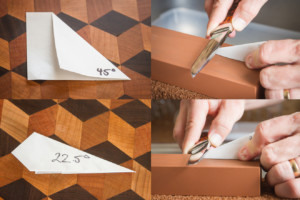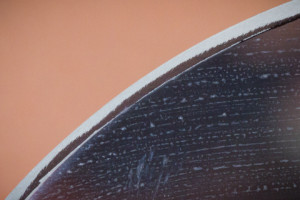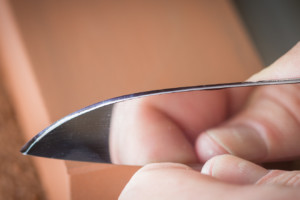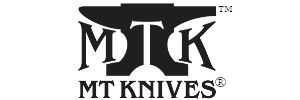Four-Part Mini-Series Introduction on How to Sharpen Your Knife
This is the second post in a four-part series in the month of January on how to sharpen your knife. My four-part post is designed to be kind of like a mini-course on knife sharpening. There is a very special announcement that I will make at the end of the series so stay tuned to see what I have in store! You will not be disappointed.
This four-part mini-course is designed to take you through the process of establishing a burr. This course will get your blade razor sharp in no time. Of course, if you have been around MTKnives for any amount of time you will know that I am not satisfied with razor sharp. Again, you will have to stay tuned for my big announcement at the end of the month… Hint, hint.
If you are afraid you will forget to check back then make sure you sign up for my email list because I am going to be making the announcement via email also.
Lastly, here is a quick road map before we get started:
- Know These 4 Important Terms Before Sharpening Your Knife
- What is the Right Angle to Sharpen Your Knife?
- Top 5 Worst Mistakes Made When Sharpening Your Knife
- How to Establish a Burr on the Edge of Your Knife
Sharpening Fundamentals
Angle of Sharpening:
There is a fairly wide discussion with various elements of truth throughout the knife sharpening world. Most professional knife sharpeners will recommend you sharpen your knife somewhere between an 18-22 degree angle on the blade. I believe that the purpose you are using the knife for, your blade using style, and your sharpening style will all contribute to the right angle on the blade for you.

Factors that Affect your Angle of Choice:
Every knife maker chooses a particular type of steel to use. This choice will affect you, the user, in ways that you may not realize. The knife maker that you purchased your knife from may have a recommendation on the angle you should sharpen your knife at. So check with the manufacturer of the knife to see what they recommend. Once you know what the recommended angle of sharpening is you can modify your choice of angle for your own purpose and style.
Longer Edge Hold
If your usage style relies on a knife that stays sharp longer then you should adjust the angle you sharpen your knife up. Toward the higher end of 18-22 degrees. The higher the angle the thicker the primary edge of the knife will be. The thicker the knife edge is the longer the knife edge will hold. You may sacrifice some sharpness to keep an edge on your knife edge longer.
Don’t think that when I say “sacrifice some sharpness” that I mean that your knife will not be beyond razor sharp. Razor sharp is only the beginning of sharpness in my opinion. Your knife will be beyond razor sharp using my training regardless of what angle you need to use for your situation. You may not be able to split a hair three ways using an angle of 22 degrees but you will be able to brush the hair on your arm and watch it fall off with ease.
If you are heavy handed user who gives their knife a regular workout. You may want to opt for an angle that suits your needs.
If Your Knife Never Seems Sharp Enough for you…
If you are the kind of person who likes to know that their knife is hair splitting sharp at all times you may need to opt for a lower angle on the blade. When you sharpen at a lower angle you are removing more metal from the primary edge making it thinner. The thinner the primary edge of your knife is the easier it will be too dull the edge of your knife. You may need to sacrifice some blade toughness to have the sharpest knife possible.
When I say “sacrifice some blade toughness” I don’t mean that your knife will lose its edge the first time you use it to cut a slice of warm butter. I mean that your knife will need slightly more often maintenance than a blade with a thicker primary edge. It will be able to cut through just about anything with Teflon-like smoothness but may lose its edge faster.
If you are a knife user who likes to use a light touch to slice and doesn’t mind stropping more frequently then you may want to choose a lower angle to sharpen your knife with.

For the Novice:
You will undoubtedly misjudge the angle you are sharpening you are a novice knife sharpener. I have taught many people to sharpen their knives beyond razor sharp. This is simply an observation that I make to help you get the best results.
I will address this more in depth in as we go along but for now, I recommend sharpening your knife at a lower angle than you are going for.
Changing the Angle of Sharpening
I will warn you that changing the angle of your knife’s primary edge is not a decision that you should make flippantly. Changing the angle of your primary edge requires a lot of work to reshape the knife edge at the angle you desire.
If you desire to lower the angle of the primary edge you will need to grind away a tiny amount of the secondary edge where it meets the primary edge in order to lay your primary edge on the sharpening stone flat.
If you desire to raise the angle of the primary edge you will need to grind enough of the edge of knife away to give you a smooth transition from the secondary edge to the primary edge. If you don’t grind enough of the primary edge away your primary edge will be misshapen causing a lot of frustration later down the road as you maintain your knife.
My Recommendation.
I recommend sticking with the angle that the blade has from the manufacturer, to begin with. You will be much less frustrated when you don’t get the results you want as quickly as you are hoping for.
If you are ready to change the angle of the primary edge then I recommend setting aside enough time to do it slowly, evenly, and correctly. Using the techniques I teach you will be able to change the angle of the primary edge without much trouble in a timely manner.
Bottom Line:
Sharpen your knife at an angle between 18-22 degrees. Choose the angle that suits you best. And change the angle when you have enough time to do it correctly.
Next up…
Top 5 Worst Mistakes Made When Sharpening Your Knife
In this post we will discuss the mistakes I encounter most often when teaching my knife sharpening courses. If you are just starting out or if you have been sharpening you can probably learn a thing or two that will help you be more patient and sharpen your knives better. If you don’t want to miss it be sure to sign up for my email list. I will be making a huge announcement in the last week of the month and you won’t want to miss that either!
Pick up Beyond Razor Sharp Digital Download Now!
What angle do you sharpen your knife at? Why? Let me know in the comments below!
